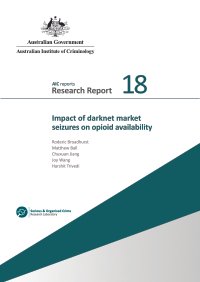By Roman Gabriel Rivera
There is growing demand for reforms to the U.S. criminal justice system. Nevertheless, there are significant questions and relatively few answers. This dissertation studies multiple U.S. criminal justice system issues using detailed administrative data from Cook County, Illinois: Does policing the police increase crime? Does the composition of a police officer's academy cohort influence their future outcomes? Is pretrial electronic monitoring an attractive alternative to pretrial release and detention? To answer these questions, I use administrative data from Chicago and Cook County, Illinois, on the Chicago Police Department, Cook County Jail, and Circuit Court of Cook County, and a range of econometric methods.
In Chapter 1, I study the effect of pretrial electronic monitoring (EM) as an alternative to pretrial release and pretrial detention (jail) in Cook County, Illinois. EM often involves a defendant wearing an electronic ankle bracelet that tracks their movement and aims to deter pretrial misconduct. Using the quasi-random assignment of bond court judges, I estimate the effect of EM versus release and EM versus detention on pretrial misconduct, case outcomes, and future recidivism. I develop a novel method for the semiparametric estimation of marginal treatment effects in ordered choice environments, with which I construct relevant treatment effects. Relative to release, EM increases new cases pretrial due to bond violations while reducing new cases for low-level crimes and failures to appear in court. Relative to detention, EM increases low-level pretrial misconduct but improves defendant case outcomes and reduces cost-weighted future recidivism. Finally, I bound EM's pretrial crime reduction effect. I find that EM is likely an adequate substitute for pretrial detention. However, it is unclear that EM prevents enough high-cost crime to justify its use relative to release, particularly for defendants who are more likely to be released.
Chapter 3, joint with Bocar Ba, studies and differentiates between the effects of oversight and outrage on policing. Previous studies estimating the impact of police oversight on crime rely on major policing scandals as shocks to examine the impact of oversight on crime. We argue that the simultaneous effect of public outrage on officer behavior and crime contaminates these results, and we provide a conceptual framework that distinguishes between oversight and outrage. We identify two events relating to unexpected court rulings in Chicago that increased oversight and caused a decline in reported misconduct but had virtually no public reaction. Despite the decrease in reported misconduct, crime and officer activity were unaffected. We contrast this with a major policing scandal, after which we find both a rise in crime rates without an equivalent increase in arrests and a decline in officer stops and use of force. Our results suggest that police oversight can reduce misconduct without increasing crime.
New York: Columbia University, 2023. 299p.




